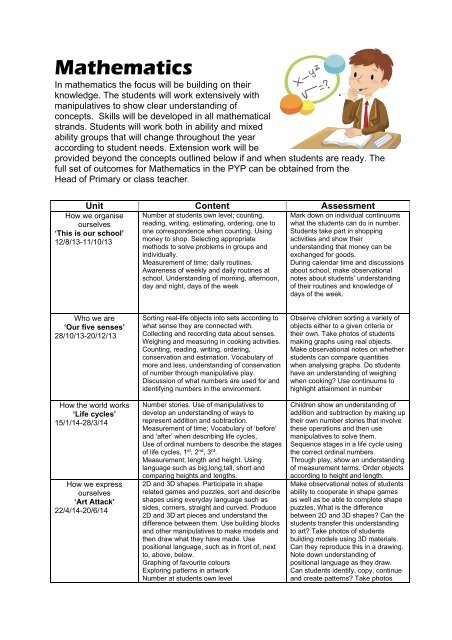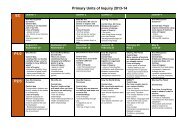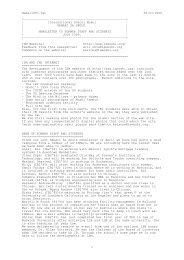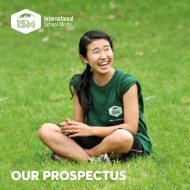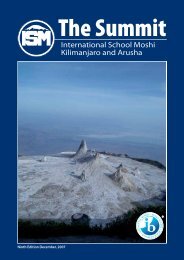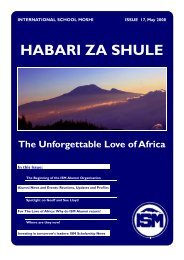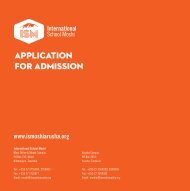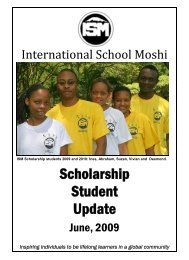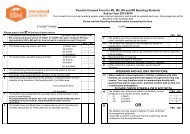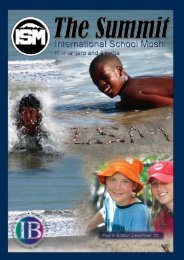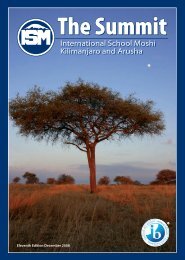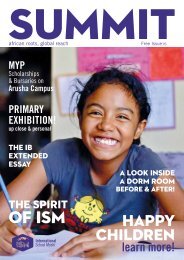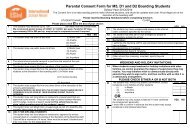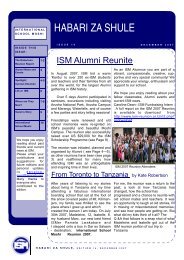Primary Handbook - International School Moshi
Primary Handbook - International School Moshi
Primary Handbook - International School Moshi
You also want an ePaper? Increase the reach of your titles
YUMPU automatically turns print PDFs into web optimized ePapers that Google loves.
MathematicsIn mathematics the focus will be building on theirknowledge. The students will work extensively withmanipulatives to show clear understanding ofconcepts. Skills will be developed in all mathematicalstrands. Students will work both in ability and mixedability groups that will change throughout the yearaccording to student needs. Extension work will beprovided beyond the concepts outlined below if and when students are ready. Thefull set of outcomes for Mathematics in the PYP can be obtained from theHead of <strong>Primary</strong> or class teacher.Unit Content AssessmentHow we organiseourselves‘This is our school’12/8/13-11/10/13Number at students own level; counting,reading, writing, estimating, ordering, one toone correspondence when counting. Usingmoney to shop. Selecting appropriatemethods to solve problems in groups andindividually.Measurement of time; daily routines.Awareness of weekly and daily routines atschool. Understanding of morning, afternoon,day and night, days of the weekMark down on individual continuumswhat the students can do in number.Students take part in shoppingactivities and show theirunderstanding that money can beexchanged for goods.During calendar time and discussionsabout school, make observationalnotes about students’ understandingof their routines and knowledge ofdays of the week.Who we are‘Our five senses’28/10/13-20/12/13How the world works‘Life cycles’15/1/14-28/3/14How we expressourselves‘Art Attack’22/4/14-20/6/14Sorting real-life objects into sets according towhat sense they are connected with.Collecting and recording data about senses.Weighing and measuring in cooking activities.Counting, reading, writing, ordering,conservation and estimation. Vocabulary ofmore and less, understanding of conservationof number through manipulative play.Discussion of what numbers are used for andidentifying numbers in the environment.Number stories. Use of manipulatives todevelop an understanding of ways torepresent addition and subtraction.Measurement of time; Vocabulary of ‘before’and ‘after’ when describing life cycles,Use of ordinal numbers to describe the stagesof life cycles, 1 st , 2 nd , 3 rd .Measurement; length and height. Usinglanguage such as big,long,tall, short andcomparing heights and lengths.2D and 3D shapes. Participate in shaperelated games and puzzles, sort and describeshapes using everyday language such assides, corners, straight and curved. Produce2D and 3D art pieces and understand thedifference between them. Use building blocksand other manipulatives to make models andthen draw what they have made. Usepositional language, such as in front of, nextto, above, below.Graphing of favourite coloursExploring patterns in artworkNumber at students own levelObserve children sorting a variety ofobjects either to a given criteria ortheir own. Take photos of studentsmaking graphs using real objects.Make observational notes on whetherstudents can compare quantitieswhen analysing graphs. Do studentshave an understanding of weighingwhen cooking? Use continuums tohighlight attainment in numberChildren show an understanding ofaddition and subtraction by making uptheir own number stories that involvethese operations and then usemanipulatives to solve them.Sequence stages in a life cycle usingthe correct ordinal numbers.Through play, show an understandingof measurement terms. Order objectsaccording to height and length.Make observational notes of studentsability to cooperate in shape gamesas well as be able to complete shapepuzzles. What is the differencebetween 2D and 3D shapes? Can thestudents transfer this understandingto art? Take photos of studentsbuilding models using 3D materials.Can they reproduce this in a drawing.Note down understanding ofpositional language as they draw.Can students identify, copy, continueand create patterns? Take photos


